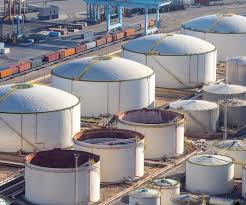
28 March 2014, News Wires – US President Barack Obama’s administration unveiled plans on Friday to reduce methane emissions in the country across several sectors with a focus on the oil and gas industry.
Through a combination of new potential regulations and the promotion of new technologies, the White House hopes to cut back on the amount of potent greenhouse gases released into the air.
Methane is said to be 20 times more potent than carbon dioxide as a greenhouse gas.
During the process of hydrocarbon production and transportation, the oil and gas industry emits the second largest volume of methane of any US sector, accounting for about 28% of total emissions (agriculture accounts for about 36% of all methane emissions, mostly from livestock).
A big chunk of those emissions come from venting natural gas during production. Operators flare gas partly because of a lack of pipeline infrastructure in places like North Dakota, and partly because of low commodity prices.
Methane venting and flaring will be high on the White House’s priority list of matters to address, with plans later this year to propose updated standards to reduce venting and flaring from oil and gas production on public lands.
In the spring, the Environmental Protection Agency will begin soliciting input from from independent experts, and in the fall will determine how best to “pursue further methane reductions” from co-producing wells, liquids unloading, leaks, pneumatic devices and compressors.
Any new regulations would be completed by the end of 2016. The Obama administration also plans to work closely with states to form policies that will help reduce methane emissions.
Howard Feldman, director of regulatory and scientific affairs for the American Petroleum Institute, said the industry is doing a good enough job cutting emissions without the need for further regulations, which he said could have “a chilling effect on the American energy renaissance”.
“The industry has led efforts to reduce emissions of methane by developing new technologies and equipment, and recent studies show emissions are far lower than EPA projected just a few years ago,” he said in a statement.
He added: “Methane is natural gas that operators can bring to the market. There is a built-in incentive to capture these emissions.”
The White House will also look to promote innovative technologies through loans and grants.
For example, the 2015 budget proposes a new $4.7 million programme to speed development of technologies for leak detection and monitoring, pipeline leak repair without having to evacuate gas from the pipelines, smart pipeline sensors, and compressor controls.
In 2012, operators emitted the methane equivalent of 127 million tonnes of carbon dioxide during production, processing, transmission, storage, and distribution of natural gas. The equivalent of another 32 million tonnes of carbon dioxide was emitted from production and refining of oil.
In the gas industry, about 31% of emitted methane came from production sources, 15% from processing, 34% from the transmission and storage, and 20% from distribution.
“As our use of natural gas in manufacturing, transportation, and power generation increases… we must continue to build on progress in reducing methane emissions from this vital sector of our economy,” the administration said in its plan to reduce methane.
– Upstream



